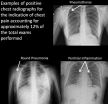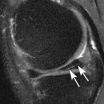INFORMATION:
Publication
Eva-Maria Felix, Falk Münch and Wolfgang Ensinger published their green method for generating gold nanotubes and their suitability as hydrogen peroxide sensors in the specialist journal RSC Advances of the British Royal Society of Chemistry (RSC Advances 4, 24504-24510, 2014, DOI: 10.1039/c4ra03377a).
MI-No. 82e/2014, Uta Neubauer
Green meets nano
Scientists at TU Darmstadt create multifunctional nanotubes using nontoxic materials
2014-12-03
(Press-News.org) Coffee, apple juice, and vitamin C: things that people ingest every day are experimental material for chemist Eva-Maria Felix. The doctoral student in the research group of Professor Wolfgang Ensinger in the Department of Material Analysis is working on making nanotubes of gold. She precipitates the precious metal from an aqueous solution onto a pretreated film with many tiny channels. The metal on the walls of the channels adopts the shape of nanotubes; the film is then dissolved. The technique itself is not new, but Felix has modified it: "The chemicals that are usually used for this were just too toxic for me." She preferred not to use cyanide, formaldehyde, arsenic and heavy metal salts. She was inspired by a journal article by researchers who achieved silver precipitation using coffee.
Felix also used coffee in her first experiments. She then tested apple juice, followed by vitamin C. This seemed to be the best suited to her because "you never know what's in coffee and apple juice." On the other hand, Vitamin C - or ascorbic acid - is available in pure form from chemical stores - a requirement for reproducible studies. But what does the vitamin have to do with the precipitation of gold? In the human body, vitamin C makes free radicals harmless by transferring electrons to them. "Gold precipitation functions according to the same principle. The only difference is that the vitamin does not take on radicals, but rather gold ions", explains Falk Münch, a postdoctoral researcher and supervisor of Felix' PhD thesis. The gold ions that are dissolved in the precipitation bath are transformed into metallic gold after absorbing electrons.
Additional, harmless chemicals are required for the process. But the procedure is green not only because of the non-toxic substances, but also because it takes place at room temperature and without an external power supply, thus saving energy. Furthermore, as opposed to other methods, no expensive devices are required. The film with the nanochannels is merely placed in the precipitation bath. "It's really unbelievable that aqueous solutions and simple basic chemicals can produce such precise nanostructures" says Münch.
"Green meets Nano" is a motto of the researchers at the TU. The only thing that is not green in the procedure is the film that is used as the template, notes Ensinger. Although tests with bio-based plastics are already on the agenda, the films still consist of polycarbonate also made or of polyethylene terephthalate (PET).
In order to create the miniature plastic channels that define the shape, a round film is vertically bombarded with an ion beam. Each ion leaves a straight track in the film which then becomes a small hole, or, when seen through the microscope: a channel that is then etched. Its diameter can be set precisely - down to far less than 100 nanometers. The gold nanotubes are thus several hundred times finer than a human hair. Their wall thickness depends both on the duration of precipitation and on the gold concentration of the original solution. After the film is dissolved, the result is - depending on the experimental conditions - a collection of individual nanotubes or an array of hundreds of thousands of interconnected tubes.
The crux of the technique: an ion accelerator is needed to generate an ion beam. The TU scientists found the ideal partner for their research in the GSI Helmholtz Center for Heavy Ion Research at the outskirts of Darmstadt; but the GSI's large-scale accelerator was not suitable for subsequent commercial use for financial reasons. The TU scientists are already looking for alternatives. For example, a company in the USA produces similarly perforated films with smaller accelerators. "The films are not as well-defined as ours are, but they are also suitable", says Münch. Furthermore, they are inexpensive: a film roughly the size of a sheet of paper costs only a few euros. Ensinger says that the price of gold is not a factor because the amounts that are required are small: "With 1 gram of gold, we could make a nanotube for literally every person on earth." Although a single tube is not useful for anyone, not much material is needed for microsensors, miniature through-flow reactors, or other potential applications.
Ensinger's team has already successfully tested one use of the gold nanotubes: they are suitable for building sensors to measure hydrogen peroxide. This chemical damages nerve cells and apparently plays a role in neurodegenerative diseases such as Alzheimer's and Parkinson's. A microsensor that can measure hydrogen peroxide in the human body would thus be practical both in medical research as well as for diagnosis. The conversion of hydrogen peroxide to water, catalyzed by the gold releases electrons generates an easily measurable electric current. The gold nanotubes conduct electricity especially well due to their one-dimensional structure. In addition, they are relatively long and are thus more durable than normal nanoparticles.
"Nano meets Life" is the second motto of the TU Materials Science researchers. For example, they are thinking about also using the nanotubes to measure blood sugar. "A subcutaneous sensor could save diabetes patients from having to constantly prick their fingers" thinks Ensinger. The green method of production also has advantages here because the components of such implants should be produced with as few toxic chemicals as possible. "This completes the circle", says the TU professor, combining the two mottos: "Green meets Nano meets Life".
ELSE PRESS RELEASES FROM THIS DATE:
REPORT: More Hispanics Earning Bachelor's Degrees in Physical Sciences and Engineering
2014-12-03
WASHINGTON, D.C., December 3, 2014--A new report from the American Institute of Physics (AIP) Statistical Research Center has found that the number of Hispanic students receiving bachelor's degrees in the physical sciences and engineering has increased over the last decade or so, passing 10,000 degrees per year for the first time in 2012. The overall number of U.S. students receiving degrees in those fields also increased over the same time, but it increased faster among Hispanics.
From 2002 to 2012, the number of Hispanics earning bachelor's degrees in the physical sciences ...
New path of genetic research: Scientists uncover 4-stranded elements of maize DNA
2014-12-03
TALLAHASSEE, Fla. -- A team led by Florida State University researchers has identified DNA elements in maize that could affect the expression of hundreds or thousands of genes.
"Maybe they are part of the machinery that allows an organism to turn hundreds of genes off or on," said Associate Professor of Biological Science Hank Bass.
Bass and Carson Andorf, a doctoral student in computer science at Iowa State University, began this exploration of the maize genome sequence along with colleagues from FSU, Iowa State and the University of Florida. They wanted to know ...
Chemotherapy can complicate immediate breast reconstruction after mastectomy
2014-12-03
New York, NY, December 2, 2014 - Immediate breast reconstruction following mastectomy is becoming more prevalent. However, in breast cancer patients undergoing simultaneous chemotherapy, thrombotic complications can arise that can delay or significantly modify reconstructive plans. Outcomes of cases illustrating potential complications are published in the current issue of Annals of Medicine and Surgery.
Chemotherapy is increasingly used to treat larger operable or advanced breast cancer prior to surgery. Chemotherapy delivered via the placement of a central venous line ...
Not all induced pluripotent stem cells are made equal: McMaster researchers
2014-12-03
Hamilton, ON (Dec. 3, 2014) - Scientists at McMaster University have discovered that human stem cells made from adult donor cells "remember" where they came from and that's what they prefer to become again.
This means the type of cell obtained from an individual patient to make pluripotent stem cells, determines what can be best done with them. For example, to repair the lung of a patient with lung disease, it is best to start off with a lung cell to make the therapeutic stem cells to treat the disease, or a breast cell for the regeneration of tissue for breast cancer ...
Computer model enables design of complex DNA shapes
2014-12-03
CAMBRIDGE, MA -- MIT biological engineers have created a new computer model that allows them to design the most complex three-dimensional DNA shapes ever produced, including rings, bowls, and geometric structures such as icosahedrons that resemble viral particles.
This design program could allow researchers to build DNA scaffolds to anchor arrays of proteins and light-sensitive molecules called chromophores that mimic the photosynthetic proteins found in plant cells, or to create new delivery vehicles for drugs or RNA therapies, says Mark Bathe, an associate professor ...
Mediterranean diet linked to improved CV function in erectile dysfunction patients
2014-12-03
Vienna, Austria - 3 December 2014: The Mediterranean diet is linked to improved cardiovascular performance in patients with erectile dysfunction, according to research presented at EuroEcho-Imaging 2014 by Dr Athanasios Angelis from Greece. Patients with erectile dysfunction who had poor adherence to the Mediterranean diet had more vascular and cardiac damage.
EuroEcho-Imaging is the annual meeting of the European Association of Cardiovascular Imaging (EACVI), a branch of the European Society of Cardiology (ESC), and is held 3-6 December in Vienna, Austria.
Dr Angelis ...
Interventional radiology procedure preserves uterus in patients with placenta accreta
2014-12-03
CHICAGO - Researchers reported today on a procedure that can preserve fertility and potentially save the lives of women with a serious pregnancy complication called placenta accreta. Results of the new study presented at the annual meeting of the Radiological Society of North America (RSNA) showed that placement of balloons in the main artery of the mother's pelvis prior to a Caesarean section protects against hemorrhage and is safe for both mother and baby.
Placenta accreta, a condition in which the placenta abnormally implants in the uterus, can lead to additional complications, ...
Many chest X-rays in children are unnecessary
2014-12-03
CHICAGO - Researchers at Mayo Clinic found that some children are receiving chest X-rays that may be unnecessary and offer no clinical benefit to the patient, according to a study presented today at the annual meeting of the Radiological Society of North America (RSNA).
"Chest X-rays can be a valuable exam when ordered for the correct indications," said Ann Packard, M.D., radiologist at the Mayo Clinic in Rochester, Minn. "However, there are several indications where pediatric chest X-rays offer no benefit and likely should not be performed to decrease radiation dose ...
Common knee surgery may lead to arthritis and cartilage loss
2014-12-03
CHICAGO - A popular surgery to repair meniscal tears may increase the risk of osteoarthritis and cartilage loss in some patients, according to research presented today at the annual meeting of the Radiological Society of North America (RSNA). The findings show that the decision for surgery requires careful consideration in order to avoid accelerated disease onset, researchers said.
The new study focused on the meniscus, a wedge-shaped piece of cartilage in the knee that acts as a shock absorber between the femur, or thighbone, and tibia, or shinbone. The two menisci ...
Animal welfare could be improved by new understanding of their emotions
2014-12-03
New research from researchers at Queen Mary University of London (QMUL) looking at how goats express subtle positive emotions could lead to greater understanding of animal welfare. While there has been a great deal of research into negative emotions and stress in animals it is often hard for those who work with animals to know when they are in more subtle positive states.
Dr Alan McElligott and Dr Elodie Briefer, working from QMUL with goats at Buttercups Sanctuary for Goats, carried out the first research, published today (Wednesday) in the journal Animal Behaviour, ...
LAST 30 PRESS RELEASES:
Heart-brain connection: international study reveals the role of the vagus nerve in keeping the heart young
Researchers identify Rb1 as a predictive biomarker for a new therapeutic strategy in some breast cancers
Survey reveals ethical gaps slowing AI adoption in pediatric surgery
Stimulant ADHD medications work differently than thought
AI overestimates how smart people are, according to HSE economists
HSE researchers create genome-wide map of quadruplexes
Scientists boost cell "powerhouses" to burn more calories
Automatic label checking: The missing step in making reliable medical AI
Low daily alcohol intake linked to 50% heightened mouth cancer risk in India
American Meteorological Society announces Rick Spinrad as 2026 President-Elect
Biomass-based carbon capture spotlighted in newly released global climate webinar recording
Illuminating invisible nano pollutants: advanced bioimaging tracks the full journey of emerging nanoscale contaminants in living systems
How does age affect recovery from spinal cord injury?
Novel AI tool offers prognosis for patients with head and neck cancer
Fathers’ microplastic exposure tied to their children’s metabolic problems
Research validates laboratory model for studying high-grade serous ovarian cancer
SIR 2026 delivers transformative breakthroughs in minimally invasive medicine to improve patient care
Stem Cell Reports most downloaded papers of 2025 highlight the breadth and impact of stem cell research
Oxford-led study estimates NHS spends around 3% of its primary and secondary care budget on the health impacts of heat and cold in England
A researcher’s long quest leads to a smart composite breakthrough
Urban wild bees act as “microbial sensors” of city health.
New study finds where you live affects recovery after a hip fracture
Forecasting the impact of fully automated vehicle adoption on US road traffic injuries
Alcohol-related hospitalizations from 2016 to 2022
Semaglutide and hospitalizations in patients with obesity and established cardiovascular disease
Researchers ‘listen in’ to embryo-mother interactions during implantation using a culture system replicating the womb lining
How changing your diet could help save the world
How to make AI truly scalable and reliable for real-time traffic assignment?
Beyond fragmented markets: A new framework for efficient and stable ride-pooling
Can shape priors make road perception more reliable for autonomous driving?
[Press-News.org] Green meets nanoScientists at TU Darmstadt create multifunctional nanotubes using nontoxic materials



